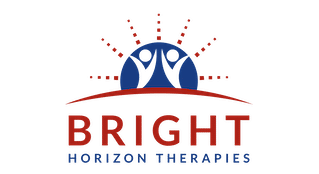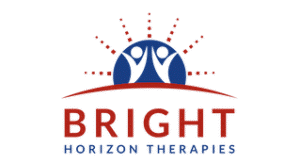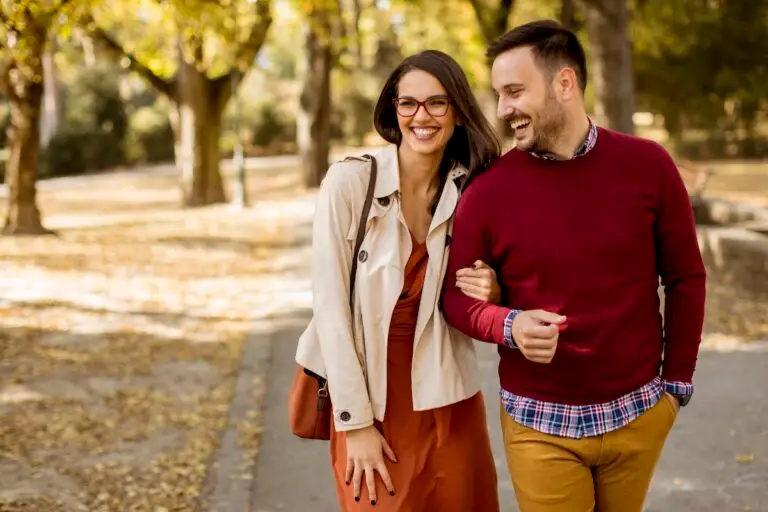Trauma counselling differs from traditional talk therapy in several key ways, which often leads people to ask, ‘What happens in trauma counselling?’
When we’ve experienced trauma—whether we’re fully aware of it or not—we often feel disconnected from our sense of safety. We may have parts of ourselves that avoid looking at what’s happened or fear being overwhelmed by emotions. Trauma counselling provides a stigma-free, non-judgmental space that meets you where you are. While I’ll explain how this process works, it’s essential to know that trauma counselling prioritizes safety—whether it’s emotional, physical, mental, or cultural.
This doesn’t mean you’ll never feel uncomfortable; growth and healing usually involve discomfort. However, through trauma counselling in person or online, you’ll find tools and practices that allow you to experience your emotions more safely. So, how can trauma counselling support you? While the specific approach depends on your unique experiences, trauma counselling can help you reconnect with your inner safety, regulate your nervous system, develop healthy coping skills, and, ultimately, integrate the traumatic experiences into your life.
The first session: Building a foundation of trust
It’s natural to feel nervous or anxious before the first session. Meeting a new counsellor can be intimidating, and it’s common for clients to experience inner conflict about seeking help. Some people may have had negative experiences with previous therapists, so it takes courage to try again.
The first session isn’t about diving into your most painful experiences. I often tell clients it’s crucial to respect their boundaries as much as possible during this time. While the therapeutic relationship differs from others, it’s essential to give yourself time to build trust with your counsellor. This process doesn’t happen overnight. Clients have the right not to answer any question they’re uncomfortable with and can say no to an experiment or technique. A skilled trauma counsellor will honour your boundaries and pace, listening without judgment.
In the first session, I typically explore areas of life that are going well alongside any concerns and goals. We also discuss potential obstacles that might prevent progress toward those goals. If time permits, I introduce a ‘worst-things list,’ where we write down significant life events and the client’s age at the time. The client doesn’t need to share details, just labels such as ‘toxic relationship,’ ‘bullied,’ or ‘death of a parent.’ This list helps us identify connections between past experiences and current challenges.
I usually meet with clients weekly or biweekly at the start of therapy. As we progress, this may extend to once a month.
Why it is essential to understand trauma
When we experience symptoms of trauma, it can feel confusing, especially if we can’t connect them to past events. This is often the case if we touch on implicit memories of trauma. Our rational mind may not fully grasp why we feel or react in specific ways, making it harder to understand what we’re going through.
This is why I introduce psychoeducation about trauma early in the therapeutic process. In this article, I use the term “trauma” broadly to include experiences such as adults with childhood abuse, complex trauma, and relational trauma. For example, when I explain structural dissociation—how our minds can fragment in response to overwhelming experiences—many clients feel seen and begin to recognize how their symptoms are connected to past trauma. The more we understand trauma, the more we can make sense of our own experiences. For this reason, psychoeducation is a vital part of trauma counselling.
Trauma recovery typically follows three stages: stabilization and safety, trauma integration and mourning, and finally, reconnection. Recovery is personal and requires an approach that tailored to your unique needs. For instance, if a client has high levels of dissociation, we might spend more time in the stabilization phase, using tools like self-soothing skills, grounding techniques, or parts work therapy. When a client is within their “window of tolerance“—the emotional range where they can process experiences without becoming overwhelmed—we may begin using EMDR to help integrate traumatic memories.
In my practice, I combine EMDR, somatic practices, polyvagal-informed methods, and parts work therapy to support the healing journey. Mindfulness is also a key element, as it helps clients reconnect with their bodies. However, the approach always depends on what works best for you. Ultimately, you are an active participant in your healing, and together we’ll find the right tools to support your growth.
Creating a safer space: Healthy use of power and boundaries
Trauma counselling, like all forms of counselling, is bound by an ethical framework that includes confidentiality. But beyond this, effective trauma treatment requires additional elements to create a truly safer space for healing.
For individuals who’ve experienced trauma in relationships, the concept of a “safe space” can be both comforting and triggering. Many clients, particularly those who’ve never experienced safe relationships, may have parts of themselves that feel unsafe in relational settings. While creating safety is the counsellor’s responsibility, it doesn’t mean that clients will feel entirely safe right away. That’s ok. A trauma counsellor influences what happens in trauma counselling. Let me explain what creating a safer space entails:
Healthy use of power
A trauma counsellor must use their power responsibly, empowering clients in the process. Since trauma often involves significant misuse or abuse of power, counsellors need to remain aware of this dynamic and avoid power-over interactions. This means taking clients’ concerns seriously and ensuring the relationship is collaborative rather than hierarchical.
Respecting boundaries
Trauma often involves boundary violations, which can disconnect individuals from their sense of boundaries. For instance, some clients may adopt a “fawn” response and let go of their boundaries as a survival strategy. Reconnecting with and learning to assert healthy boundaries is a critical part of trauma recovery. The therapeutic relationship provides a space for clients to rebuild their capacity to recognize and honour their boundaries. Explore how well you’re practicing healthy boundaries with this quick boundary self-assessment quiz designed to guide your journey.
Polyvagal-informed therapeutic relationship
Polyvagal theory helps us understand how the nervous system reacts to cues of safety or danger in our environment and relationships. While these responses can arise in the therapeutic relationship, trauma counselling offers an opportunity for co-regulation. A counsellor’s role is to foster this, creating a space where clients can learn to regulate their nervous systems and develop new, more secure ways of relating.
Warning signs
Unfortunately, not all therapists provide high-quality care. It’s important to recognize red flags, such as a counsellor dismissing or invalidating your experience with comments like, “You’re overreacting” or “This doesn’t sound so bad.” A counsellor should always respect your boundaries. Another warning sign is if a therapist imposes their personal beliefs, such as insisting that you forgive your abuser regardless of your feelings.
The trauma recovery process
Trauma recovery is a transformative journey, and what happens in trauma counselling after the first session is part of a stage-based approach tailored to your unique needs. Let’s explore what each stage typically involves:
What happens in trauma counselling – stage 1?
In the first stage, we focus on stabilization. While this looks different for each person, I collaborate with clients to manage overwhelming emotions and contain traumatic memories. We work on expanding their window of tolerance and reducing anxiety. At this stage, I often introduce parts work, which helps clients reconnect with their different parts and develop strategies to work with activated parts of themselves.
The outcome of this stage is that people generally feel more confident in managing their emotions and trauma responses. Some experience less anxiety, others feel more whole and connected, and some notice improved relationships. Furthermore, I offer clients practices for trauma recovery that allow them to nurture a sense of inner safety, contain painful memories or manage overwhelming emotions.
What happens in trauma counselling – stage 2?
Stage 2 centers on trauma integration and mourning. When clients have enough capacity to stay within their window of tolerance, we begin integrating traumatic experiences. I often use EMDR during this stage. Many clients report that their traumatic memories no longer provoke an emotional response. While the events remain a fact of their past, they lose their emotional charge, allowing for healing.
What happens in trauma counselling – stage 3?
After integrating the trauma, the focus shifts to reconnection and finding new meaning. This stage is about exploring your transformed self, reevaluating your values, and developing deeper connections in your relationships. Some people reconnect with old dreams and approach them with a fresh perspective. At this stage, people often feel empowered to re-engage with the world.
While these stages offer a general pathway, recovery isn’t always linear. It may involve complex layers, and each individual’s journey is unique, requiring a personalized approach.
Ongoing support: Beyond the therapy room
One of the best things about trauma counselling is that the tools and practices we use don’t just stay in the therapy room—they come along with you into everyday life. Here are just some examples:
- Mindfulness is not just for therapy; it’s like a mental reset button that helps you handle life’s ups and downs.
- Journaling? That’s your go-to for self-reflection and connecting with your thoughts and feelings.
- Parts work—it’s like having a conversation with yourself, but it’s only healthier. Many of my clients (and myself) use it outside of sessions to build a better relationship with ourselves. It’s self-care but on a deeper level.
Take Away – What happens in trauma counselling
Trauma counselling is a transformative process that provides the tools, support, and safe space needed for healing. While the journey may feel challenging, it leads to greater emotional resilience, self-awareness, and a renewed sense of connection. Remember, recovery is personal, and you don’t have to walk this path alone—trauma counselling is here to guide you every step of the way.
Sources
Most formal education in counselling and psychology offers little in-depth training on trauma recovery. Trauma counselling skills are typically developed through additional professional trainings in evidence-based approaches such as EMDR, parts work, and somatic therapies. The following resources informed this article:
Fisher, J. (2023). Janina Fisher’s Trauma treatment certification training (CCTP): The latest proven techniques to resolve deeply held trauma [Online professional training]. PESI
Haines, S. (2022). Safety, belonging, and dignity: Using the generative power of somatics to heal individual and systemic trauma. [Online professional training]. Academy of Therapy Wisdom
Davis, E., & Marchand, J. (2021). Attachment and dissociation assessment and treatment [Online professional training]. R. Cassidey Seminars
Greenwald, R. (2020). EMDR basic training, approved by the EMDR International Association (EMDRIA). [Online professional training]. Trauma Institute & Child Trauma Institute
Enns, V. (2020). Trauma – Strategies for resolving the impact of post-traumatic stress. [Online professional training]. Crisis and Trauma Resource Institute.
Vancouver College of Counsellor Training. (2016). Sexual Abuse Counselling Skills [In-person professional training]. Vancouver, BC, Canada.



